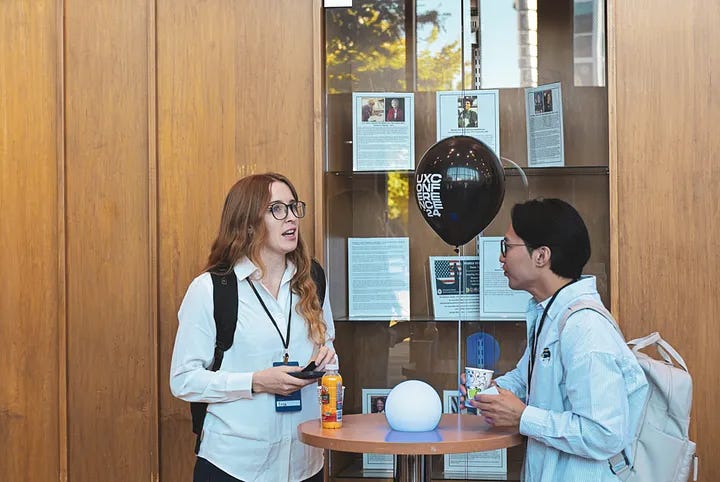Your Usability Testing Is Too Polite—How to Get Brutally Honest Feedback
Are Your Users Telling the Truth, or Just Being Nice?
You bring in participants, ask them to use your product, and watch as they nod along, say “Yeah, that makes sense,” and give you just enough feedback to sound useful.
But in reality? They’re holding back.
Some participants often aim to be agreeable and may hesitate to criticize the design to avoid hurting the facilitator's feelings.
That means you’re making design decisions based on politeness, not truth.
🔗 Read the study
So, how do you break through the politeness filter and get real, brutally honest feedback?
Let’s dive in.
Why Most Usability Testing Fails
How Users Hold Back (and Why It’s a Problem)
5 Proven Strategies to Get Honest Usability Feedback
The Ethics of Making Users Uncomfortable
Tool of the Week: Katalon Studio – Comprehensive Test Automation Solution
Resource Corner: Best Reads on Conducting Real Usability Testing
Conference: Meet, Connect, and Grow
🔎 Why Most Usability Testing Fails
Usability testing is supposed to uncover frustrations, pain points, and confusion.
But instead, many UX teams get:
✅ Mildly positive feedback.
✅ Generic responses like “Yeah, that’s easy to use.”
✅ Users who try to “please” the facilitator.
Why does this happen? Because human psychology is at play.
Perception of Being Tested: Participants often mistakenly believe that the usability test evaluates their abilities rather than the design's usability. This misconception can lead them to avoid admitting difficulties to appear competent. (Source)
This creates a false sense of usability success—leading teams to believe their designs work better than they actually do.
🛑 How Users Hold Back (and Why It’s a Problem)
Let’s look at the three biggest reasons usability participants aren’t being honest.
1. Politeness Bias
People naturally avoid saying negative things because they don’t want to hurt feelings.
Example: A user struggles to complete a task but says, “I think I just need to get used to it.”
2. Social Desirability Bias
Users try to appear more competent than they actually feel, even if they’re confused.
Example: A participant hesitates, then says, “Oh yeah, that makes sense,” even when it doesn’t.
3. Hawthorne Effect
Users behave differently when they know they’re being observed.
Example: Someone scrolls slowly through a form in a test but would rage-click “Next” in real life.
The result? UX teams walk away thinking their designs are working when they’re actually failing.
💡 5 Proven Strategies to Get Honest Usability Feedback
To break through politeness and get raw, unfiltered insights, try these approaches:
1️⃣ Ask Users to Speak Their Thoughts—Even the Negative Ones
Instead of: “Do you like this feature?”
Try: “What about this is frustrating?”
2️⃣ Remove the Social Pressure
Conduct remote, unmoderated usability tests so users don’t feel observed.
Use anonymous feedback tools to get brutally honest reactions.
3️⃣ Give Users a “Rage Quit” Option
Ask: “If you were alone and frustrated, would you just give up?”
Observe if users hesitate or avoid clicking certain elements.
4️⃣ Test with Real Scenarios, Not Hypotheticals
Instead of: “How would you use this?”
Try: “Here’s a task—complete it without our help.”
5️⃣ Silence Is Your Best Friend
After asking a question, wait. Let users fill the silence.
People tend to reveal more when they feel the need to explain.
🔗 Read why silence improves research
⚖️ The Ethics of Making Users Uncomfortable
Pushing users to be brutally honest can feel uncomfortable—but it’s necessary.
🔹 Ethical Testing: Ensure participants feel safe to express frustration without guilt.
🔹 Transparency: Tell users upfront: “We need to hear everything—even if it’s bad.”
🔹 Psychological Safety: Assure users they aren’t being judged, and you’re testing the design, not them.
🔗 Learn about ethical usability testing
🛠️ Tool of the Week: Katalon Studio – Comprehensive Test Automation Solution
To get real, unfiltered user feedback, you need the right tools.
Katalon Studio is a comprehensive test automation solution that allows you to:
✅ Automate testing across web, mobile, and desktop applications.
✅ Integrate seamlessly with CI/CD pipelines to ensure continuous feedback.
✅ Utilize both manual and script-based testing to cater to various skill levels.
📚 Resource Corner: Best Reads on Conducting Real Usability Testing
Article: 4 Common Pitfalls in Usability Testing and How to Avoid Them to Get More Honest Feedback
Book: Observing the User Experience – The ultimate guide to conducting usability studies that reveal real insights.
Article: Think Aloud Protocol — A technique where participants verbalize their thoughts while performing a task, providing insights into their actions, reactions, and expectations during the process.
🎙️ Conference: Meet, Connect, and Grow




If you’re serious about growing in UX, UXCon25 is where you need to be. It’s where top researchers, designers, and strategists come together to share insights, challenge ideas, and shape the future of UX. You’ll walk away with practical knowledge, fresh strategies, and real-world tactics you can apply immediately.
Final Thought: If Your Users Aren’t Complaining, You Aren’t Testing Right
Polite usability testing won’t fix design problems.
If users aren’t getting frustrated, you’re not pushing them hard enough.
The best UX teams know: You can’t improve what you don’t know is broken.
So, how honest is your usability testing?





